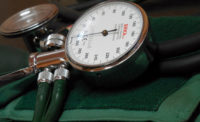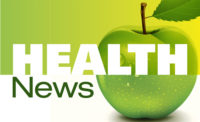 The risk of elevated blood pressure among children and adolescents rose 27 percent during a thirteen-year period, according to new research in the American Heart Association journal Hypertension.
The risk of elevated blood pressure among children and adolescents rose 27 percent during a thirteen-year period, according to new research in the American Heart Association journal Hypertension.
Higher body mass, larger waistlines and eating excess sodium may be the reasons for the elevated blood pressure readings, researchers said.
High blood pressure is a risk factor for stroke, heart disease and kidney failure — accounting for about 350,000 preventable deaths a year in the United States.
“High blood pressure is dangerous in part because many people don’t know they have it,” said Bernard Rosner, Ph.D., lead author of the study and professor of medicine at Harvard Medical School in Boston, Mass. “It’s a very sneaky thing. Blood pressure has to be measured regularly to keep on top of it.”
What it should be
In adults age 20 and older, blood pressure should normally be less than 120/80 mm Hg. However, among children and teens blood pressure norms vary according to age, sex and height.
While the researchers noted “elevated” readings, the children could not be called hypertensive because blood pressure readings must be high three times in a row for an official diagnosis.
Researchers compared more than 3,200 children ages 8-17 in the National Health and Nutrition Examination Survey (NHANES) III in 1988-1994 to more than 8,300 in NHANES in 1999-2008. They accounted for differences between the two groups in age, sex, race/ethnicity, body mass, waistline and sodium intake.
Sodium intake expected to increase
Researchers found:
- Boys were more likely to have elevated blood pressure, but the rate increased more markedly in girls from the first study to the second.
- More children were overweight in the second study, and both sexes, especially girls, had bigger waistlines.
- Children whose body mass or waistline measurements were in the top 25 percent for their age group were about twice as likely to have elevated blood pressure as children with measurements in the bottom 25 percent.
- African-American children had a 28 percent higher risk of elevated blood pressure than non-Hispanic white children.
- In both studies, children with the greatest sodium intake were 36 percent more likely than those with the lowest intake to have elevated blood pressure.
- More than 80 percent of children in both studies had a daily sodium intake above 2,300 milligrams; however, fewer children in the later study had an intake above 3,450 milligrams.
“Everyone expects sodium intake will continue to go up,” Rosner said. “It seems there’s been a little bit of listening to dietary recommendations, but not a lot.”
Americans eat an average 3,400 milligrams of sodium daily — more than twice the 1,500 or less that the American Heart Association recommends. Two-thirds of sodium intake is from store-bought foods and one-quarter from restaurant offerings.
Studies have linked excessive sodium in the diet to high blood pressure, and have suggested reducing sodium intake in children’s and adolescents’ can lower average systolic (top number) blood pressure by 1.2 mm Hg and average diastolic (bottom number) pressure 1.3 mm Hg.
Co-authors are: Nancy R. Cook, Sc.D.; Stephen Daniels, M.D., Ph.D. and Bonita Falkner, M.D. Author disclosures are on the manuscript.



